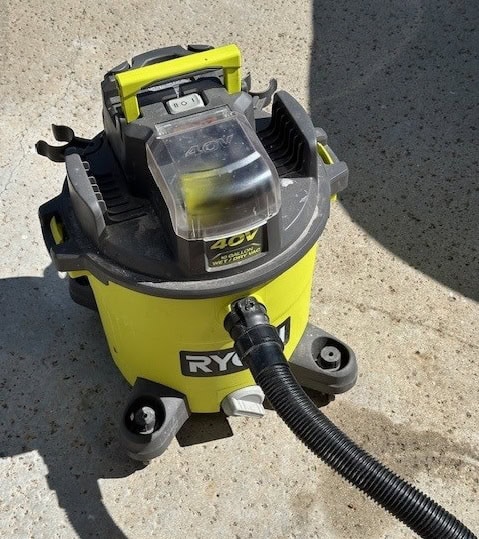A shop vac, short for shop vacuum, is a powerful and versatile vacuum cleaner designed for heavy-duty cleaning tasks in workshops, garages, and construction sites. Unlike regular household vacuums, shop vacs are built to handle larger debris, liquids, and fine dust, making them an essential tool for DIY enthusiasts and professionals alike.
History of the Shop Vac
The shop vac’s origins trace back to the mid-20th century when the demand for a more robust cleaning solution in industrial and workshop environments grew. The concept was to create a vacuum that could handle not just dust but also larger debris and even liquids. The first commercial shop vacs appeared in the 1960s, offering a durable and powerful alternative to traditional vacuum cleaners. Over the decades, the design and technology have evolved, incorporating features like improved filtration systems, stronger motors, and various attachments to enhance functionality and efficiency.
Different Types of Shop Vacs
- Wet/Dry Shop Vacs: Capable of vacuuming both liquids and dry debris.
- Portable Shop Vacs: Smaller, lightweight models for easy transport and quick cleanups.
- Wall-Mounted Shop Vacs: Fixed units that save floor space and offer convenient hose storage.
- Industrial Shop Vacs: High-capacity models designed for extensive and continuous use in large workspaces.
- Cordless Shop Vacs: Battery-powered units offering greater mobility and flexibility.
Key Features of Shop Vacs
- Motor Power: Determines the suction strength.
- Tank Capacity: Size of the container for holding debris and liquids.
- Filtration System: Includes standard filters, HEPA filters, and foam filters for wet vacuuming.
- Attachments: Various nozzles, hoses, and brushes for different cleaning tasks.
- Portability: Wheels, handles, and compact designs for easy movement.
- Durability: Sturdy construction to withstand heavy use.
Choosing the Right Shop Vac
When choosing a shop vac, consider the specific needs of your projects. For heavy-duty tasks, an industrial shop vac with a powerful motor and large tank capacity is ideal. For smaller or more frequent tasks, a portable or cordless shop vac might be more convenient. Pay attention to the filtration system, especially if you deal with fine dust or allergens, and ensure the attachments included match the tasks you will be performing.
Shop Vac Recommendations
Proper Use and Techniques
Using a shop vac properly involves selecting the right attachment for the task and adjusting the settings accordingly. For dry debris, ensure the correct filter is in place, and for liquid spills, switch to the foam filter. Move the shop vac steadily over the area to be cleaned, avoiding rapid back-and-forth motions that can reduce efficiency. Always follow the manufacturer’s instructions for optimal performance.
Maintenance and Care
Regular maintenance of your shop vac will extend its lifespan and maintain its performance. After each use, empty the tank and clean the filters. Periodically check for clogs in the hose and attachments. Inspect the power cord for any signs of wear or damage. Replace filters as recommended by the manufacturer and ensure all parts are dry before reassembling.
Shop Vac Safety Tips
Safety is paramount when using a shop vac. Always wear appropriate personal protective equipment, such as gloves and eye protection, especially when handling hazardous materials. Ensure the shop vac is suitable for the type of debris you are cleaning. Avoid using the shop vac in wet conditions unless it is specifically designed for wet vacuuming. Keep the power cord away from sharp objects and heavy traffic areas to prevent tripping hazards or damage.
Conclusion
A shop vac is an invaluable tool for any DIY enthusiast or professional, offering powerful and versatile cleaning capabilities. By understanding the different types, key features, and proper usage techniques, you can choose the right shop vac for your needs and ensure it remains in optimal condition for years to come.


